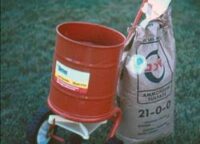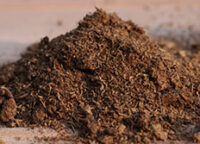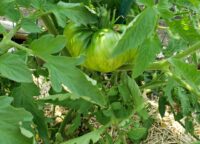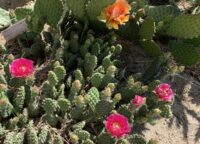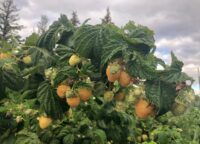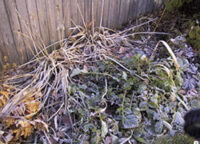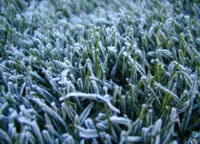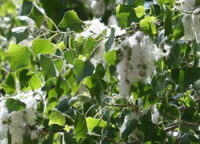- 11, 29, 2016
- Comments Off on 1620 – Phosphate Fertilizers & Water Pollution
- By cwis672
1620 – Phosphate Fertilizers & Water Pollution
Phosphates are a major source of pollution in lakes and streams, and result in over-production of algae and water weeds. However, many of us have misconceptions regarding the source of polluting phosphates, and many homeowners unknowingly contribute to the problem. Lawn and garden fertilizers often are implicated as the major source of phosphate pollution. However, […]
Take a Tour- 11, 29, 2016
- Comments Off on 1523 – Fall Lawn Fertilization
- By cwis672
1523 – Fall Lawn Fertilization
When is the best time to fertilize my lawn? Fall is the best time of year to fertilize Colorado’s bluegrass lawns. Promotions about “lawn winterization” may sound mysterious, but there’s nothing magical about it. Simply fertilize with nitrogen sometime during late September to early November at lower altitudes, and earlier in the mountains. Why is […]
Take a Tour- 10, 24, 2016
- Comments Off on 1604 – Organic Soil Amendments
- By cwis672
1604 – Organic Soil Amendments
Soil improvement is a continual process. It often takes ten or more years to build a productive garden soil. If a soil has too much sand or too much clay, the solution to both is the same — add organic material. Organic materials, also known as organic amendments, break apart tight clays and hold water […]
Take a Tour- 10, 24, 2016
- Comments Off on 1817 – Tomatoes for Home Gardens
- By cwis672
1817 – Tomatoes for Home Gardens
Tomatoes are one of the most popular garden vegetables. Many different tomato types, varieties and shapes are available for gardening. How should I start a tomato plant? Tomatoes do best if started indoors from seed six to eight weeks before planting. For an early crop, plant tomatoes as soon as the danger of frost is […]
Take a Tour- 10, 18, 2016
- Comments Off on 1306 – Cactus
- By cwis672
1306 – Cactus
How many species of cacti are there? The cactus family (Cactaceae) is one of the most striking, distinctive, diversified and specialized groups in the plant kingdom. It includes about 2,000 species, and all of them are perennial, succulent, and native to the Americas. What are good cacti species for Colorado? Warm, dry rooms make Colorado […]
Take a Tour- 10, 17, 2016
- Comments Off on 1207 – Raspberries
- By cwis672
1207 – Raspberries
Raspberries are among the hardiest of the bush fruits. Some varieties will withstand minus 35 degrees and still produce fruit. What types of raspberries are there? There are three types of raspberries — red, black and purple. Red raspberries are the hardiest and grow well along the Front Range. Black and purple raspberries do better […]
Take a Tour- 10, 17, 2016
- Comments Off on 1216 – Fertilizing Fruit Trees
- By cwis672
1216 – Fertilizing Fruit Trees
Growth at less than the recommended rates results in reduced fruiting wood and less fruit production. If you’re starting a fertilizer program for stone fruits such as peaches or apricots, apply nitrogen to the soil around the trees at the rate of one-eighth pound for every one inch of trunk diameter. Take the trunk-diameter measurement […]
Take a Tour- 09, 16, 2016
- Comments Off on 1020 – Perennials: Winterizing
- By cwis672
1020 – Perennials: Winterizing
Colorado’s relatively warm days and cold nights, extreme temperature fluctuations and drying winds can wreak havoc with many of our commonly planted perennials. After the first hard frost, the foliage of most perennials starts to die and wither. What do I do with a withering perennial plant? One approach is to immediately remove the dead […]
Take a Tour- 09, 16, 2016
- Comments Off on 2013 – Spring Frosts & Snows
- By cwis672
2013 – Spring Frosts & Snows
Is frost bad for bulbs and perennials? Snow in the spring is welcome. The snow provides great insulation for plants and can protect hardy flowers from frosty temperatures. The moisture provided is a real boost to bulbs and perennials that are ready to emerge. If daffodils and hyacinths are blooming and snow is predicted, cover […]
Take a Tour- 08, 12, 2016
- Comments Off on Trees, Shrubs & Vines
- By cwis672
Trees, Shrubs & Vines
Trees Shrubs Vines Miscellaneous Trees 2024 Front Range Recommended Tree List Adaptable crabapple clones Alternative to overused shrubs and trees Ash Care for the Do It Yourself Gardener Ash leaves curling? Ash trees Aspen trees Austrees Buying trees & shrubs Cottonwood cotton Dwarf & specialty conifers Elm trees Excessive fall needle drop Excessive seed production […]
Take a Tour

